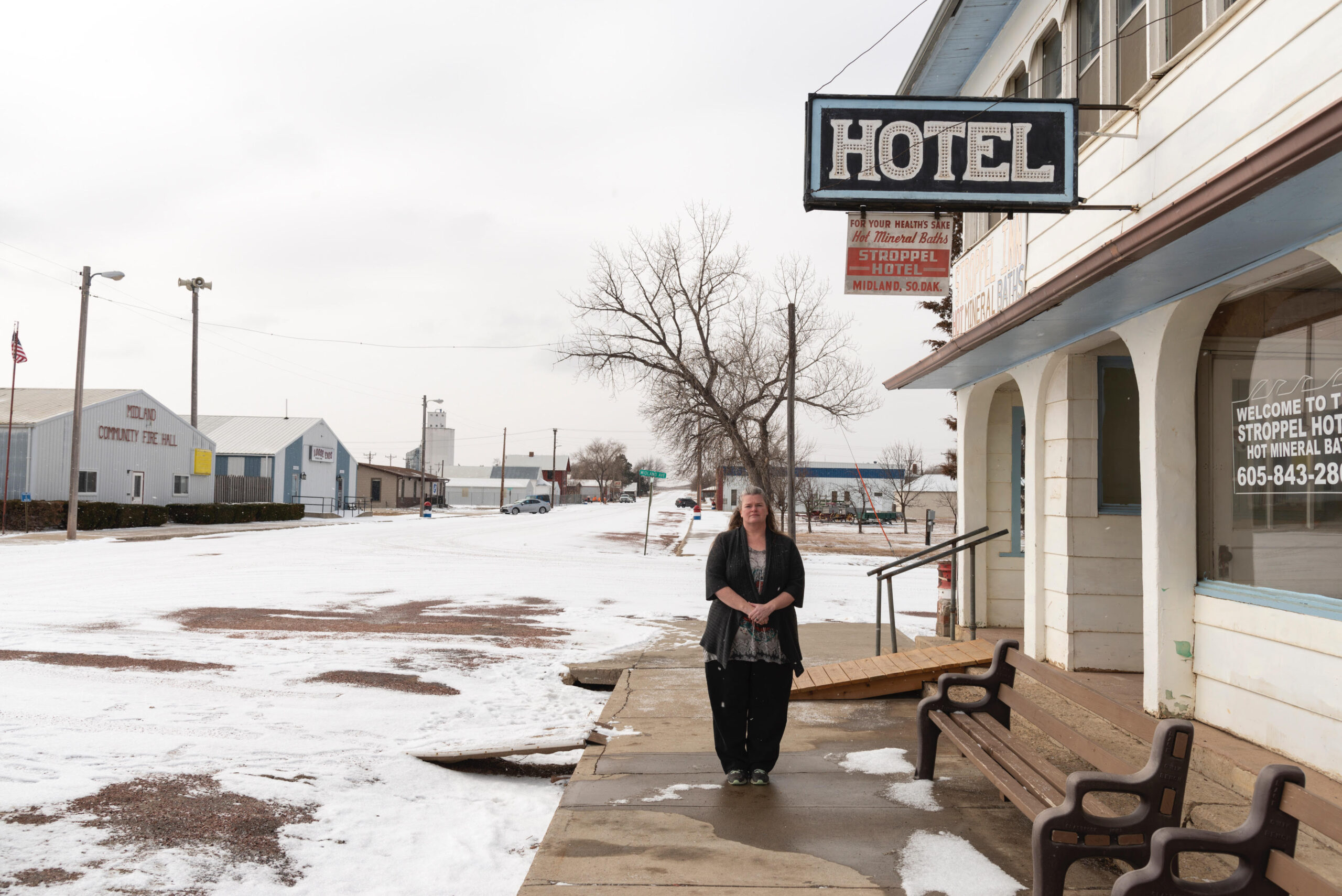Laurie Cox couldn’t believe her ears when she heard Energy Secretary Jennifer Granholm recently admit that a pipeline was the best way to transport oil across the country.
Of course, Cox knew it was true. She, like so many other South Dakotans whom the Washington Examiner spoke to, is acutely aware of the benefits of a pipeline. Not only is it more cost-effective and safer, but pipelines also pump money into local communities along its route and provide hundreds of jobs for skilled laborers.
Cox, the owner of Stroppel Hotel in Midland, South Dakota, saw her business take a major hit earlier this year when the Biden administration pulled key permits for the Keystone XL Pipeline, an $8 billion cross-border venture that would have connected two points of an existing pipeline, also called Keystone, that carries oil from Canada to Gulf Coast refineries.
Cox’s hotel had been home to welders, carpenters, and union laborers who were tied to the pipeline project. On Jan. 20, they were all out of a job.
“The current administration is doing nothing but proving they want to destroy America,” Cox said.
SOUTH DAKOTANS FEAR FOR THEIR FUTURE AND VOW NOT TO GIVE UP ON KEYSTONE FIGHT
Similar scenes played out across the country as newly unemployed workers and communities felt the real-life consequences of Biden’s Day One decision. The administration cited climate change as a reason for canceling the extension, and Biden said the “Keystone XL pipeline disserves the U.S. national interest.”
So, it was particularly painful when Cox heard the same administration that threatened her business touting the use of a pipeline.
“It solidifies that this administration does not have a platform for anything except hate,” she told the Washington Examiner.
The recent shutdown of the Colonial Pipeline due to a ransomware attack put the Biden administration’s energy policy on blast. What emerged was a garbled message filled with contradictions.
Granholm said on May 11 that while there were other options for delivering fuel to the East Coast, “the pipeline is the way to go.”
The admission came four months after Granholm called for the cancellation of the Keystone XL Pipeline.

Cox believes Granholm’s comments prove that shuttering the pipeline was purely political and “just shows incompetence and the ego of whoever is pulling the puppet strings.”
Peter Bardeson, the business manager for the Laborers, Local 620 union in Sioux Falls, South Dakota, agrees.
“How do they lay their heads down at night knowing they’re supposed to be protecting these people and providing them with what they need to live?” he told the Washington Examiner. “Ole Joe sold us out.”
Bardeson said the decisions coming out of Washington are nothing more than a campaign to reverse any policy or executive order that the Trump administration put in place, regardless of whether it’s a smart move.
Gaylord Lincoln, a South Dakota semiretired mechanic, said the anti-pipeline stance lacks logic.
“Until America becomes energy independent, we need the pipelines,” he told the Washington Examiner. “They cost less and are more efficient.”
Currently, there are four ways to move oil and gas around the country: pipeline, truck, rail, and boat. Pipelines are the most commonly used method, followed by rail. Trucks are used to move oil and gas from production sites to pipelines and across areas where there is no access to pipelines or rail. On average, a truck holds about 200 barrels of oil or about one-third of what a railcar holds. It also costs about $20 per barrel to move oil by road, compared to $10-$15 per barrel for rail and $5 per barrel by pipeline, according to Strata.org.
Railroads, though, have an advantage when it comes to speed. Railroads can transport oil from the Bakken field region in North Dakota to the Gulf Coast in five to seven days, compared to about 40 days via pipelines. However, pipelines are more efficient and can move much more product than rail or road.
Another problem with transitioning away from pipelines is safety.
According to the Fraser Institute, rail is more than 4.5 times more likely to experience an incident in the transportation of oil.
There have been numerous accidents while transporting oil by rail.
In December, a train derailed in Custer, Washington, and caught on fire. The accident spilled 29,000 gallons of crude oil, most of which burned over eight hours.
CLICK HERE FOR MORE FROM THE WASHINGTON EXAMINER
In 2013, a BNSF Railway train hit another derailed train that led to a crash involving 20 cars carrying crude. The accident released 476,000 gallons of crude oil and cost $13.5 million, not including environmental damages. A 2015 crash in Mount Carbon, West Virginia, led to 362,000 gallons of oil leaking into the Kanawha River and contaminating the soil after 27 tank cars derailed.
To be sure, there have been numerous pipeline leaks, but there has been less damage in comparison. It’s a reality that isn’t lost on Lincoln.
“The Biden administration can’t argue with a straight face that pipelines are worse for the environment,” he said. “Nothing they say holds water.”





